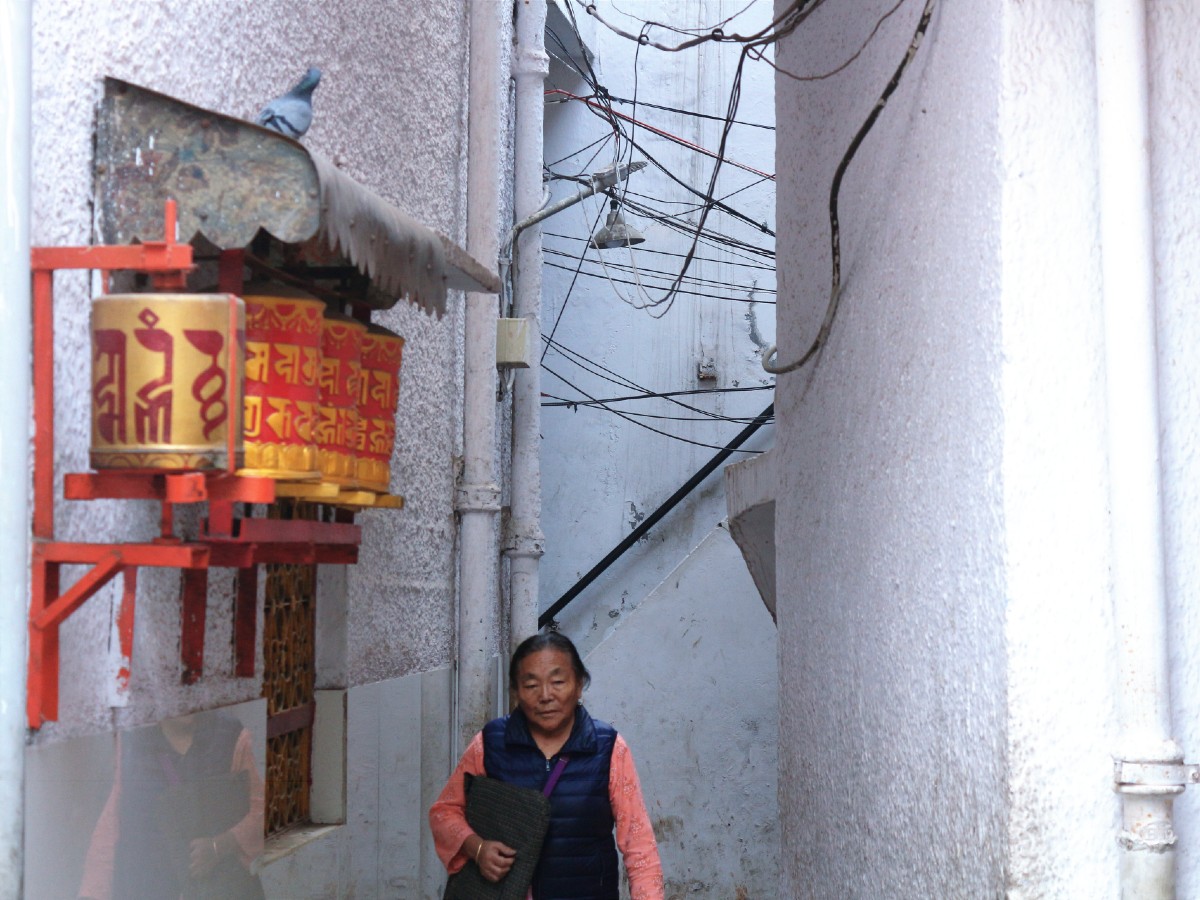
Time for worship: A Tibetan woman is ready to roll a prayer clock
Winter has arrived and Majnu ka Tila, the Tibetan locality in the Capital, has come alive.
The Tibetans living here are involved mainly in the business of selling clothes with many shops at this time of the year selling winter attire.
“We the Tibetans in India are known mostly for winter attires. People often say, ‘Tibeti logon ko sardiyon ke kapde ka zyada gyaan hai (Tibetan people have good knowledge of winter clothes)’,” says Tsering, a resident of Majnu ka Tila’s Tibetan colony, which is officially known as New Aruna Nagar.
Also read: A kingdom of fish in Delhi
Famous for its cafes and restaurants, it has become a popular hang-out spot for Delhi University students.
Days are spent here in leisure, surrounded by authentic Tibetan culture.
However, the diaspora is held deep within its narrow lanes and a century-old history is not easily noticed. For the majority of the nearly 3,500 Tibetan refugees, nestled in this corner of north Delhi, the way home is not the way back.
Tibetans immigrated to India in three stages. The first followed the Tibetan Uprising of 1959 and the Dalai Lama’s exile to Dharamsala, the second when China opened Tibet to foreigners, and the third in 1996, which continues to this day.
The majority of Majnu Ka Tila’s residents are second-generation Tibetan refugees who have heard of Tibet only through stories. While they are proud of their Lhasa heritage, they have spent their entire lives in India. As fate would have it, the present is an inter-cultural friendship between Delhiites and what appears to be a little Tibet.
Most captivating inside the colony is the well-lit main courtyard of an enchanting and gracefully silent Buddhist temple. The worshipers bow their heads before turning the Dharma wheel adjacent to the temple. The bells ring, and the din comes to a halt.
Tsering, who was born and brought up in Sirmaur district in Himachal Pradesh, recalled to Patriot his ancestors’ journey from Tibet to India.
“In 1959, when China occupied Tibet with the Red Army, many Tibetans had to flee from their hometown to India, Bhutan and Nepal to take refuge,” he said.
“In India, a large number of Tibetan people settled down in Himachal Pradesh’s Dharamsala where our supreme spiritual leader Dalai Lama stays. Many others went to different cities of the country for a better living,” he added.
Keeping culture alive
How Tibetans have kept their traditions and culture alive in a strange world is an amazing story.
“We have survived the worst to keep our tradition alive. This place used to be a graveyard of the Mughals. When the Tibetan people came here to live, they often found bones in the land while digging,” said Tsering.
“What you’re seeing now – three-, four-storey buildings, it wasn’t like this before. In the early days, people used to dig a hole in the ground and live in those holes to keep themselves warm during winters. Then, our traditional rice wine became quite popular. Slowly, this place has turned into one of the famous tourist attractions in Delhi,” added Tsering.
Students who want to wear new trends and unconventional styles are frequent visitors.
However, during the monsoon season, the entire area becomes a puddle of dirty water and waste. The area has tiny houses with kachcha floors and inadequate sanitation, making it a breeding ground for diseases. For quite some time, the stench of rotten food and standing water makes one uneasy.
Follow us on:
Instagram: instagram.com/thepatriot_in/
Twitter: twitter.com/Patriot_Delhi
Facebook: facebook.com/Thepatriotnewsindia
Rival leagues trigger players’ suspensions and a legal battle in Indian golf, for now
Former Delhi CM Kejriwal criticises Centre, Delhi govt over worsening air pollution, alleges AQI manipulation
Delhi Police raids Nangloi unit producing fake engine oil, seizes over Rs 1 crore worth…
Mukesh Sharma reimagines digital components as living matter in his solo exhibition ‘Decoding Digital DNA’
Nine accused were arrested in coordinated raids as police uncovered organised networks supplying mule bank…
Nearly 1.57 lakh PUC challans issued in two months as Delhi steps up GRAP enforcement…